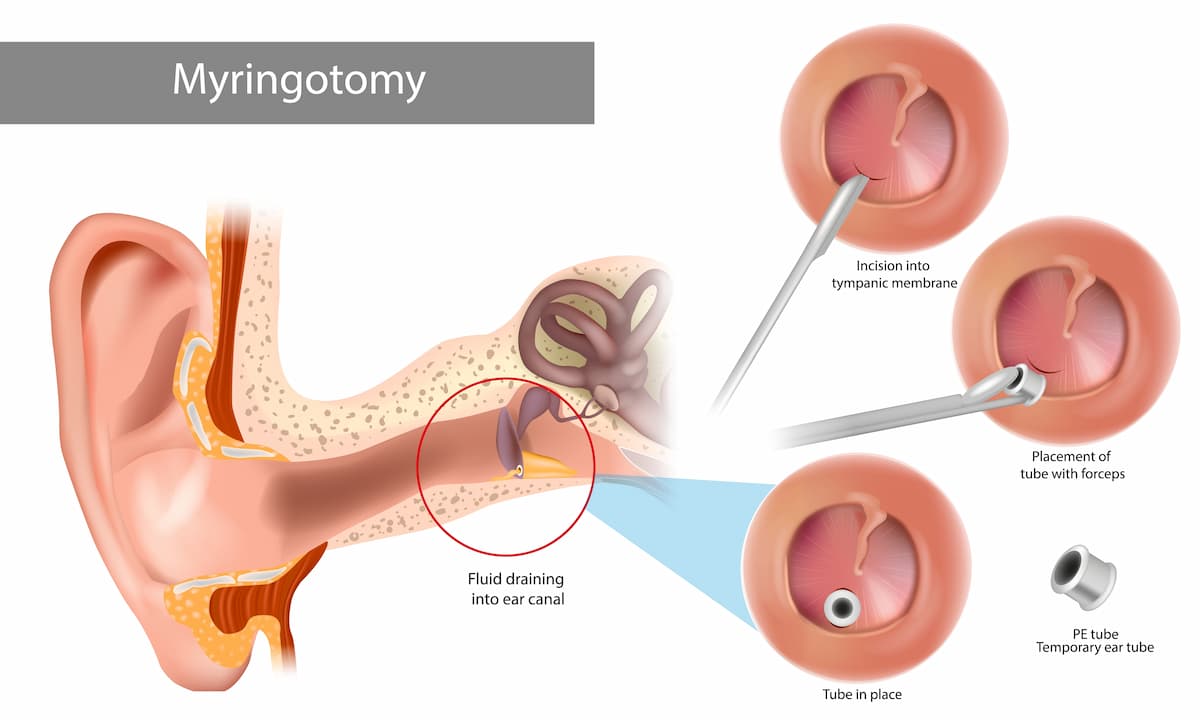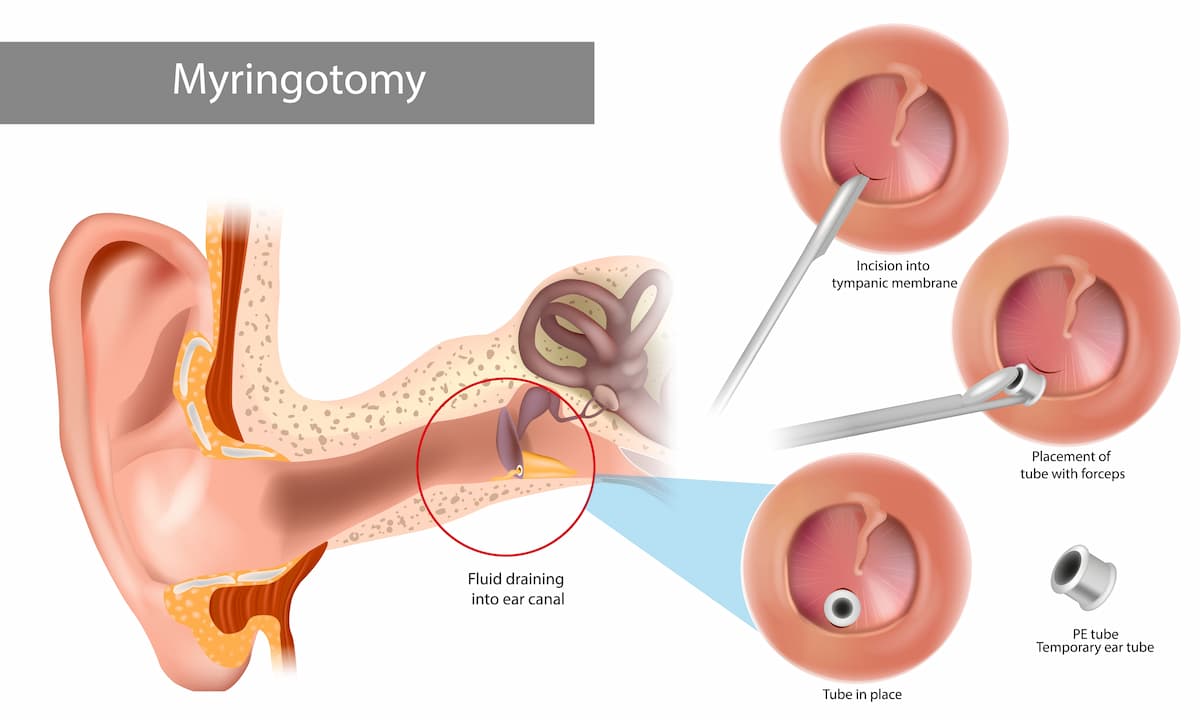Bilateral Myringotomy with Tube Insertion: Purpose, Procedure, and Postoperative Care
May 25th, 2023 | 3 min. read


As a premier provider of ENT services in Houston, we often field inquiries about various procedures, and one that frequently comes up is the bilateral myringotomy with tube insertion. This procedure, while a mouthful to say, is actually quite common and can be instrumental in improving the quality of life for patients, particularly children, suffering from recurrent ear infections or persistent middle ear fluid.
In this blog post, we aim to help you understand the purpose of a bilateral myringotomy with tube insertion, the procedure itself, and what care is needed postoperatively. So, let's dive in.
Get your child's recurrent ear infections evaluated and treated today!
Please schedule an appointment at any for your child's ear issues at one of our 10 convenient locations in Houston, TX, today.
What is a Bilateral Myringotomy with Tube Insertion?
A bilateral myringotomy with tube insertion is a procedure performed on both ears (bilateral means 'both sides'). The term "myringotomy" refers to a small surgical incision in the eardrum or tympanic membrane, and "tube insertion" is exactly what it sounds like – small tubes, often called tympanostomy tubes, are placed into the incision to assist with fluid drainage.
Why is this Procedure Needed?
The primary purpose of this procedure is to alleviate the symptoms of persistent middle ear infections, medically referred to as otitis media, or the presence of fluid in the middle ear for an extended period without an infection, a condition known as otitis media with effusion. Both conditions can result in hearing loss, speech delay, balance problems, and poor school performance in children, and less commonly, in adults.
The tube insertion part of the procedure allows air to flow into the middle ear and prevents the buildup of fluid, thereby reducing the frequency and severity of middle ear infections. In cases where fluid has already accumulated, the tubes facilitate the drainage of this fluid.
What Happens During the Procedure?
The bilateral myringotomy with tube insertion procedure is typically performed under general anesthesia, especially in children, so there's no discomfort during the operation.
The procedure involves the surgeon making a small incision in each eardrum to drain any accumulated fluid. Subsequently, a tiny tube is inserted into each incision. These tubes serve as an artificial Eustachian tube (the body's natural ventilation and drainage system for the middle ear) until the body's natural function can be restored.
The whole procedure takes about 15 to 30 minutes and is typically done on an outpatient basis.
Postoperative Care and Recovery
After the procedure, patients generally recover quite quickly. Discomfort is typically minimal and can usually be managed with over-the-counter pain medication. Here are some key points to remember for postoperative care:
-
It's normal to see a small amount of clear or blood-tinged drainage from the ears for a few days after the procedure. If the drainage is heavy, persistent, or foul-smelling, it could indicate an infection, so please contact us immediately.
-
The tubes usually stay in place for six to eighteen months and often fall out on their own. Regular follow-ups with your ENT specialist will be needed to monitor the tubes' position and function.
-
It's important to keep water out of the ears after tube placement as it can introduce bacteria and cause infection. Custom earplugs or moldable silicone plugs can be used for bathing or swimming.
-
If your child has tubes and develops an ear infection, they may not have the usual signs, such as ear pain or fever. Instead, look for increased ear drainage or changes in behavior, and consult with us if you're unsure.
Conclusion
To conclude, bilateral myringotomy with tube insertion is a commonly performed and highly effective procedure for managing persistent middle ear infections and fluid buildup. The ENT specialists at Houston ENT & Allergy have extensive experience performing this procedure. What sets us apart is that we prioritize your health and understand the urgency of relief from the discomfort that comes with persistent ear infections. Hence, we strive to ensure that this procedure can be performed with little to no waiting time, once it's been determined to be the best course of action for you or your child.
Our skilled team is committed to offering comprehensive care, including postoperative support, ensuring the best possible outcomes for our patients. You don't have to endure recurrent ear infections or persistent middle ear fluid, help is just a phone call away at Houston ENT & Allergy.
We hope this article has helped clarify what the procedure involves, why it's needed, and the kind of care needed afterwards. If you have any more questions or would like to schedule a consultation, please do not hesitate to reach out to us.
Topics:
